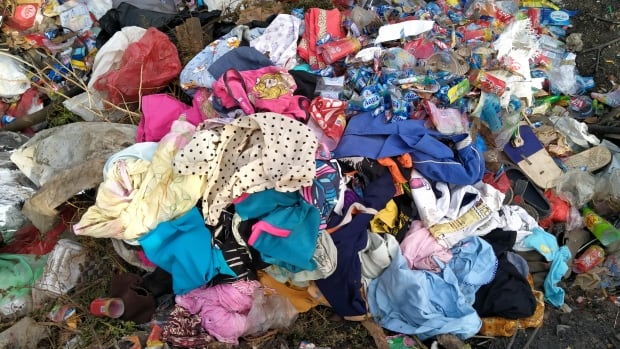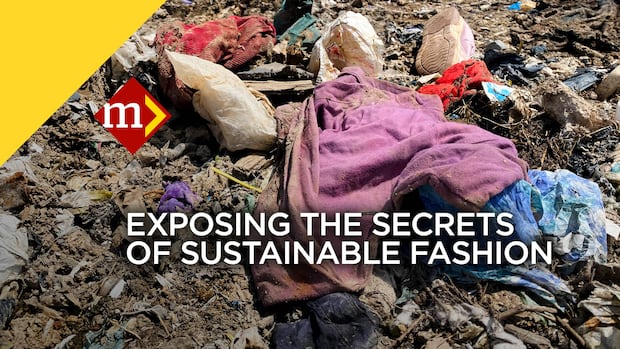In a northeast Calgary industrial park, nestled among storefronts selling flooring and grills, is the Gear Re-Store.
Inside are boxes of surplus zippers in every colour of the rainbow, industrial washers and dryers and a team of technicians skillfully stuffing puffer jackets with down filling and repairing rips and tears.
Each year, the store repairs about 10,000 jackets, sweaters and pairs of snowpants, said owner Russell McPherson.
“I don’t like waste,” said McPherson, whose shop specializes in warranty repair for outdoor gear. “We’re trying to keep gear out of the landfill and keep it in circulation longer.”
The idea is gaining momentum in other corners of the fashion industry. While fast fashion is still plenty popular, more brands are trying to appeal to customers who want their clothes to last a lifetime — or at least not wind up in the garbage — with in-store repair services, used clothing trade-in programs and new forms of recycled textiles.
But some jurisdictions have decided it isn’t enough to let businesses take the lead on reducing waste.
They’re forcing retailers to pay up.
A growing number of European countries — along with the state of California — have brought in legislation that makes brands responsible not just for making and selling clothes, but for collecting and processing them at the end of their lifespan.
The hope of these “extended producer responsibility” (EPR) schemes is to keep clothes out of the dump, and to push brands to make fabrics that last longer and are easier to recycle.
Canadian advocates hope this country will take a similar approach — though some warn Canada’s size, and the complexity of its provincial recycling systems, could poses challenges.
How it works
This week, Black Friday kicks off the holiday season — and revives concern about what will happen with this year’s sequined tops and Christmas sweaters in a few years’ time.
Enter EPR.
In the world of textiles, this would typically involve charging brands a fee based on the amount of clothing they sell, which would then go into a fund to pay for its collection and disposal, said Jordan Girling, head of EPR with the Waste and Resources Action Programme, a global non-governmental organization based in the U.K.

Policies can also be written such that brands get a discount for making clothes that are better quality or easier to recycle, he said.
For example, a brand might pay less for making a T-shirt of 100 per cent cotton compared to a blend of synthetics.
“That’s where the incentive comes for producers and brands to make the products more recyclable in the first place — a cheaper fee,” said Girling, who spoke to CBC News on the sidelines of a recent recycling industry conference in Banff, Alta.
France was an early adopter of EPR for textiles, and has had a version of a program since 2007.
But in recent years, the idea has been gaining traction elsewhere in the world. Last year, Hungary and the Netherlands introduced programs of their own, with Latvia following suit. In the European Union, negotiations are underway between the Parliament and council on rules that would make it mandatory for each member country to enact a textile EPR scheme.
Closer to home, California was the first state to approve an EPR program for textiles this fall. In New York, a similar bill is in front of the state Senate.
“[This idea] is gaining a lot of steam quite dramatically,” said Girling.

Kelly Drennan, founder of the Toronto non-profit Fashion Takes Action, said EPR isn’t a perfect solution, but thinks it would be a good step for Canada to take.
“Putting the responsibility onto the industry to pay for the volume of products that they’re making, and the poor quality, and the environmental degradation and pollution that it’s causing — I think just makes a ton of sense,” said Drennan.
Possible but complicated
Unlike a small European country, Canada has a range of different recycling systems across a range of different jurisdictions that could make implementing this type of policy a challenge.
“There is no national [recycling] program or harmonization, really, across the provinces,” said Drennan.

Still, it has been done in other sectors. Several provinces — for example, B.C., Ontario and Alberta — either already have EPR systems for products like packaging and paper products or are making the transition now.
“It’s definitely possible to do,” said Warren Mabee, director of the Queen’s Institute for Energy and Environmental Policy in Kingston, Ont., though he said collection is likely easiest in large provinces with big cities.
It’s also not clear how businesses — or shoppers — might react to potential costs associated with this type of program.
The Retail Council of Canada said it’s aware textile waste is a growing concern and is watching EPR policies in Europe and California, but is wary of “unintended consequences.”
“[The council] is particularly concerned about potential disruptions to charitable reuse systems, the current lack of scalable recycling technology, and the economic impact on businesses and consumers,” said vice-president Santo Ligotti in a statement.
We investigate the sustainability claims by some of fashion’s biggest brands and revealing why some of your clothing is far from the ‘green’ solution you’ve been sold.
Federal bureaucrats are also keeping an eye on EPR.
Environment and Climate Change Canada recently wrapped up a public consultation about how to deal with plastic waste from textiles, and has asked for feedback about whether take-back programs or EPR could work here.
Russell McPherson at Calgary’s Gear Re-Store likes the idea, and hopes that customers take a longer view of the clothes they buy.
“I would like more people to be thinking about buying quality and making it last as long as possible,” he said.



